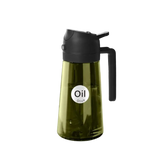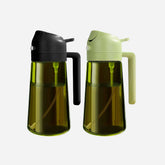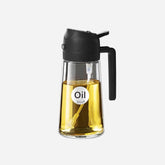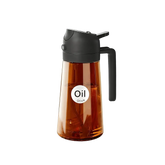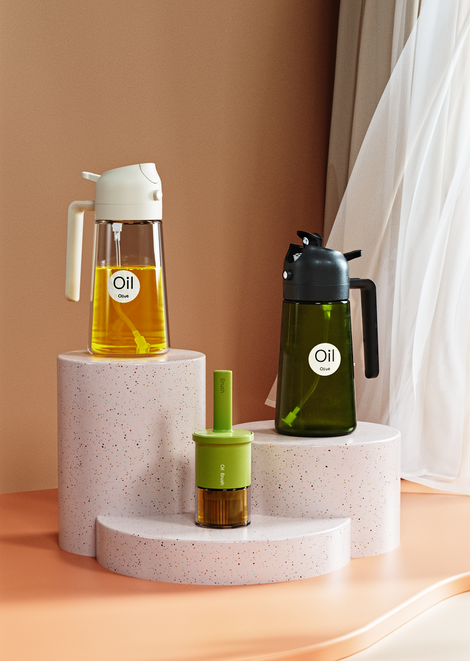serveral Tips Oil Sprayer Care Every Home Cook Should Know
If you've ever bought an oil sprayer and ended up frustrated with clogs, weak sprays, or missing accessories, you're not alone. These kitchen tools can make cooking healthier and cleaner—but only when you know how to use and maintain them. This guide gathers the most common oil sprayer FAQs along with real-world fixes, plus a few practical tips I've learned the hard way.
Why can't I get a fine mist spray?
This is by far the number one question people ask. If your sprayer is producing more of a “stream” than a mist, don't panic—it's usually not broken.
Possible causes:
- The nozzle is clogged with thick oil residue.
- The bottle is overfilled, preventing enough air pressure.
- Some oils (like unfiltered olive oil) are simply thicker and don't atomize well.
How to fix it:
- Empty the sprayer and rinse with warm water.
- Pump clean water through the nozzle until it sprays smoothly.
- Switch to lighter oils for a finer mist—many cooks use a blend of olive oil and avocado oil for better flow.
How do I clean the oil sprayer?
Cleaning is the secret to a sprayer that lasts. Oils naturally thicken and leave residues that clog nozzles if ignored.
Step-by-step cleaning method:
- Empty leftover oil into another container.
- Fill halfway with warm water and add a drop of mild dish soap.
- Spray several times until the nozzle clears out.
- Rinse thoroughly with warm water.
Quick cleaning tip with an oil bottle brush
For stubborn buildup, use an oil bottle brush to scrub the inside walls and neck of the bottle. These slim brushes reach spots that a sponge never could.
Can I use a dishwasher to clean it?
This depends on the material.
- Glass sprayers: Often safe in the dishwasher, but always check the product manual.
- Plastic sprayers: Many are not dishwasher-safe because high heat can warp the pump.
If you're unsure, play it safe with hand washing. Warm water and a few sprays of soapy water usually do the job.
According to Consumer Reports, even dishwasher-safe kitchen tools last longer when occasionally washed by hand—harsh heat and detergent cycles shorten their lifespan.
What should I do if the Stickers or User Manual are missing?
It happens more often than you'd think—sometimes accessories like stickers for labeling or even the instruction booklet get missed in packaging.
What you can do:
- Reach out directly to the seller or brand. Most reputable companies will send replacements quickly.
- For usage instructions, many brands provide free PDF manuals on their websites.
- If stickers are missing, a set of waterproof labels from any kitchen store works just as well.
Extra care tips for long-lasting use
Taking care of your oil sprayer isn't complicated, but a few small habits make a big difference:
- Rotate oils: Don't keep the same oil sitting for months.
- Store in a cool spot: Direct sunlight speeds up spoilage.
- Use an oil brush for cooking: For thick marinades or basting, an oil brush for cooking is a handy backup.
- Check seals often: Loose caps cause leaks, so give them a quick twist now and then.
📌 According to a Harvard T.H. Chan School of Public Health report, proper use of healthy oils like olive oil can reduce the risk of heart disease by up to 15%. A sprayer helps you control portions and make those health benefits easier to achieve.
Wrapping Up: Keep Your Oil Sprayer at Its Best
An oil sprayer is a simple tool, but like any kitchen essential, it rewards you if you take care of it. Whether you're fighting off clogs, wondering if it's dishwasher safe, or just need to replace missing stickers, these small fixes can save you from tossing a perfectly good sprayer.
Think of it like this: treat your sprayer like your favorite pan—it will return the favor by making your cooking lighter, cleaner, and healthier.





